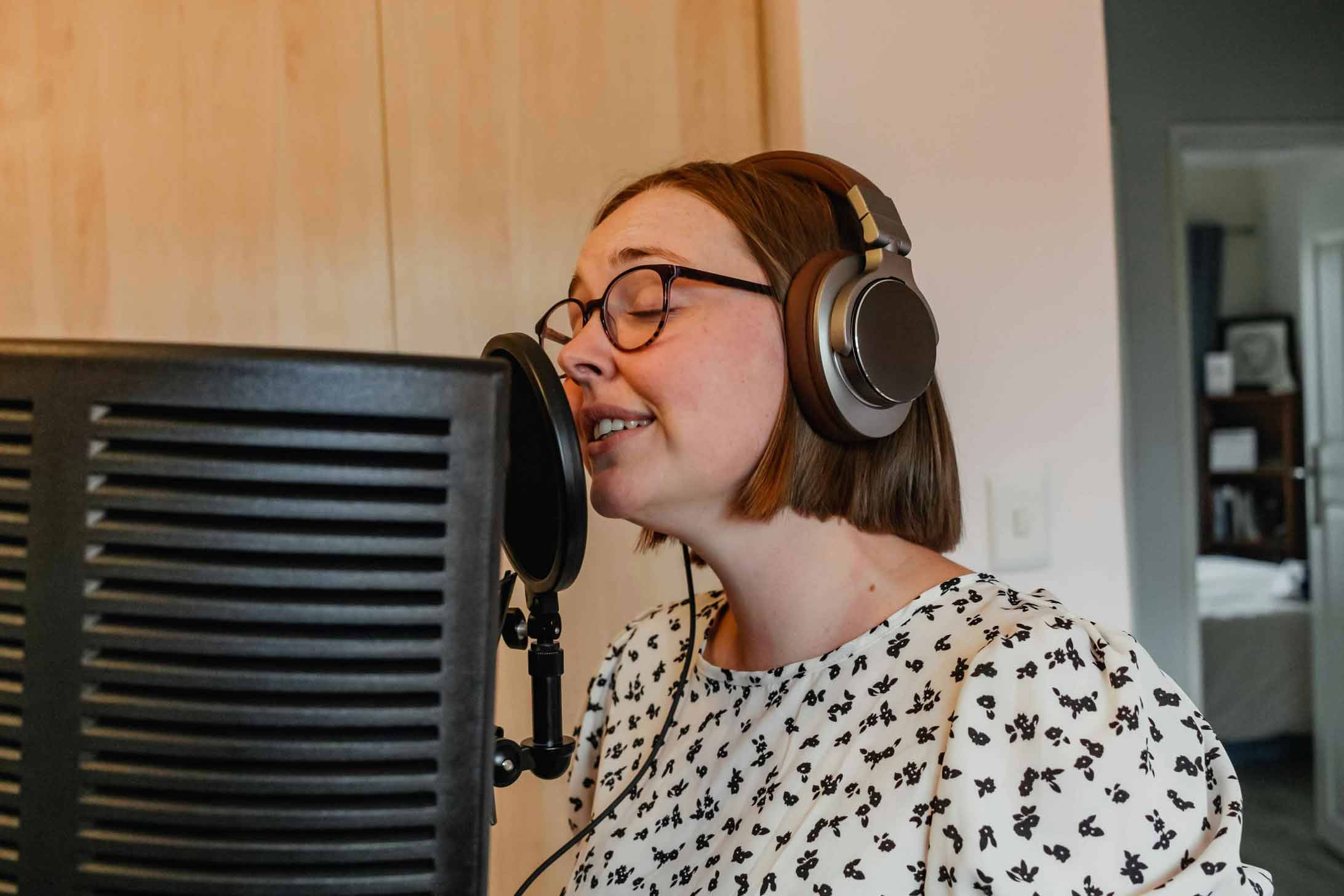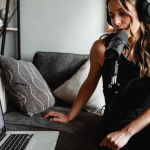Let’s have a proper discussion about something that’s been going on for years now in the radio world: the feminisation of radio imaging. It’s about time, isn’t it? For so long, the radio imaging industry was stuck in old-timey radio ideals that imaging – the voiceovers that are the voice of a radio station, introducing shows and sweeping through the programme log, jingles, promos and more – had to be delivered in that traditional deep, booming, ‘serious’ kind of male voice. And then, as sometimes happens, times change, and female voices started rising up, breaking through those old stereotypes and bringing something new, energetic and, dare I say it, better to the table.
Come on, let’s be honest. For what seems like forever, the standard mode of radio imaging has been Male Voice. It was even considered some kind of rule that a guy with balls in his throat was the only one with the authority to deliver the punch required to define the station brand. Why? Why even the guy’s voice? What kind of magic is this that we’re talking like it’s the default setting? I’ve been on the radio long enough to know that it’s not the deep, booming voices that make things hit. I’ve been in the studio with a female talent whose voice defies space and time, and whose pitch has never been lower than a high-C.
Consider pop radio: a female voice over – full of energy, warm, bright – is a perfect fit. I’ve seen (and heard) this happen all the time: a female voice can energise the entire feel of a station. It’s not about ‘softness’ or ‘femininity’: it’s about flexibility and warmth. And while female voices can hit just as hard as male voices, they often bring a layer of familiarity and humanity to the station that male voices can’t.
Versatility is Our Superpower
One of the most widespread myths in radio imaging is that female voices are too soft-spoken or not ‘oomph-y’ enough for the more serious genres. Bullocks. Female VOs are some of the chameleons of the voice-over world. I can go soft and cosy for a breakfast show, then punchy and energetic for a promo in the time it takes to breathe.
I recall working on a station back in the day that was all-male, voice-over-wise. They were launching a new weekend line-up; the feel was supposed to be ‘fun’ and ‘fresh’ and ‘a little naughty’ (whatever that meant). They were determined to do a male voice. ‘That’s how we do it.’ I argued for a female voice, imaging-wise – because, you know, sometimes having a female voice gives you a new dynamic. There was one I had in mind, who had just the right mix of saucy and spunky. I convinced them to try her. The station sounded new and exciting and, sure enough, listeners agreed. It was exactly what they were going for. That female voice-over brought a vibe that a male voice couldn’t.
Challenging Perceptions of Authority
So, here is the problem: the broadcasting industry has been stuck for decades in the notion that authority equals a deep male voice. But, really, that is just an anachronistic stereotype. A female voice can be just as authoritative – if not more so – in some contexts.
Consider news and talk radio. For years, their stations sounded pretty much the same: male voices with low pitches opening the announcement of a serious topic. Now, we hear more higher-pitched female voices in these places, and the effect is electrifying. The authority isn’t somehow lost when the pitch is raised – often the delivery seems more compelling and relatable. Those listeners are tuning in, not because of an octave-deep tone, but because the delivery is delivered with authority.
The Emotional Connection
The other thing female voices have that radio imaging needs is emotional depth not just about delivery of facts, or announcing a show, it’s about building a relationship with your listeners. And that’s what female voices do best. Whether it’s a soft and let’s-get-emotional promo for a charity campaign, or a soothing sweep for a late-night show, female voice-over artists have an amazing ability to get under the skin.
I’ve also had projects where a station needs to inject a little more soul into its brand, and a female voice is the perfect way to do that. We can be tough and commanding, but we can also be warm, empathetic and connective, which is what listeners really want to hear.
Moving Past Gendered Expectations
The thing I love about this shift is that gender truly doesn’t define great radio voice. A voice-over is only as strong as its ability to connect, to inspire, to inform – and that can come from anyone, man or woman. In radio imaging, female voices aren’t a ‘trend’ or a token gesture for diversity. We’re here because we belong here, and we’re at the top of our game.
I have watched a lot of radio stations make this change, and they’ve seen it work. The brand sounds fresher, more contemporary and more inclusive. The audience doesn’t turn on and say: ‘Oh, that’s a woman’s voice.’ Or: ‘That’s a man’s voice.’ They hear a great voice that fits the station. And that’s all they need to.
It’s time we stopped living in the old imaging voice casting stereotype. After all this time, we know that female voices are absolutely as powerful, compelling and versatile as male voices. In fact, they’re more! They bring an emotional depth, a connection, and an energy that needs to be heard. So, next time you’re thinking about your next station imaging, don’t go down the old radio voice stereotype road. Try a female voice. It just might be the difference between a good sound and a great sound for your station.


